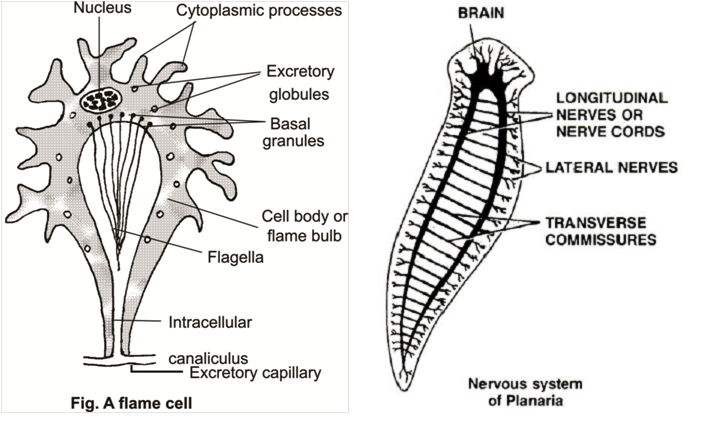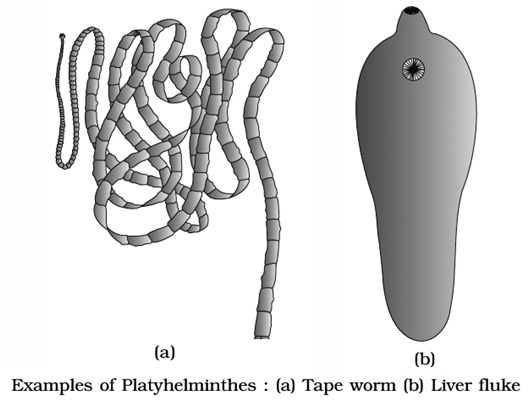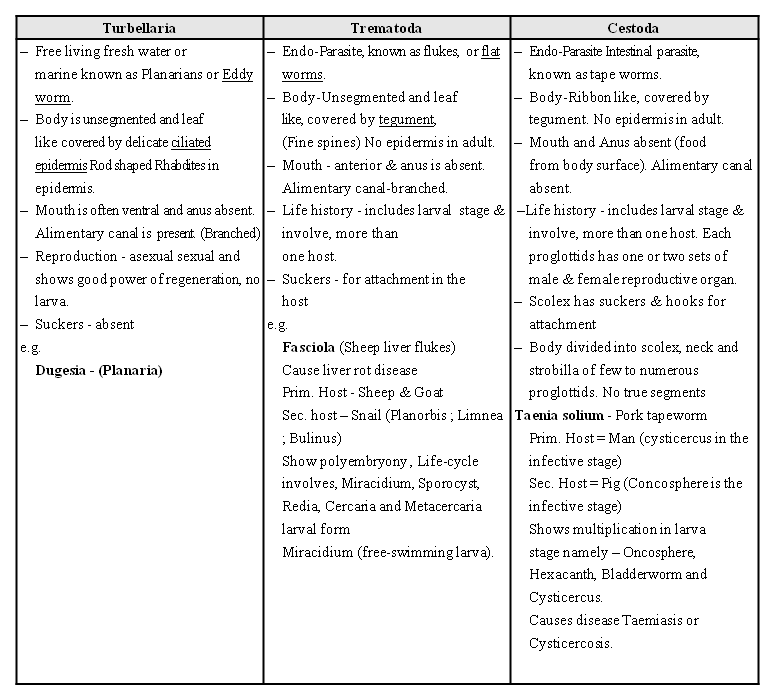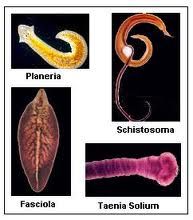- Books Name
- ACME SMART COACHING Biology Book
- Publication
- ACME SMART PUBLICATION
- Course
- CBSE Class 11
- Subject
- Biology
PHYLUM : PLATYHELMINTHES (Flatworms)
Phylum Platyhelminthes contains about 13,000 species, mostly parasites that live in other animals including man.
The important characters of this phylum are:
1. The flat worms are mostly parasites but some are free living e.g., Planaria.
2. They are acoelomate, triploblastic, bilaterally symmetrical and dorsoventrally flattened animals.
3. They have organ system level of organisation.
4. Body is not segmented except in class Cestoda (false segmentation).
5. Body is covered with a cellular, syncytial, one layered, partly ciliated epidermis; while in parasitic trematodes and cestodes, epidermis is lacking and the body is covered with cuticle.
6. Exoskeleton and Endoskeleton are completely absent. However hooks, spines, suckers (in parasitic form), teeth or thorns may be present which act as adhesive organs.
7. The space between the body wall, alimentary canal and other organs is filled with a peculiar connective tissue called the parenchyma. It helps in transportation of food materials.
8. Digestive system is totally absent in tapeworms, so they absorb food directly through body surface. In Trematoda and Turbellaria, it consists of mouth, pharynx and blind intestine (anus absent).
9. Respiratory and circulatory systems are absent.
10. Excretory system consists of single or paired protonephridium with flame cells.
11. Nervous system is primitive. The main nervous system consists of a pair of cerebral ganglia or brain and one to three pairs of longitudinal nerve cords connected to each other by transverse commissures. This type of nervous system is called ladder like nervous system e.g., Planaria (Ougesia).

12. Sense organs are of common occurrence in Turbellaria but these are greatly reduced in parasitic forms.

13. Sexes are united, i.e., hermaphrodite with very few exceptions like Schistosoma (Blood fluke).
14. Asexual reproduction by fission occurs in many fresh water forms like Turbellarians.
15. In majority of forms, eggs are devoid of yolk but provided with special yolk cells and are covered by egg shell.
16. Cross fertilization in trematodes and turbelleria and self-fertilization in cestodes is very common. Fertilization is internal. Development indirect with many larval stages.
17. Life cycle complicated, involves one or more hosts.
18. Regeneration. It is well marked in some flat worms like Planaria.
CLASSIFICATION
- Phylum platyhelminthes is divided into three classes.

Phylum Platyhelminthes
Flatworms and tapeworms are popular names for Platyhelminthes. They are a type of invertebrate with a soft body. In reality, there are over 20,000 different species of these animals. A few of these parasites live on humans and other animals as parasites. Furthermore, because of their parasitic nature, they do cause some discomfort to the host animal. Schistosomiasis, often known asbilharziasis, is a parasitic flatworm disease. A few species in this phylum are known to be major causes of disease. They are triploblastic, acoelomate, and bilaterally symmetrical. Their body is dorsoventrally flattened which is its most noticeable feature. They are flat because the body has no cavities. They also lack specialized systems and do not have segmented bodies. They have no specialized circulatory and respiratory organs, which allows oxygen and nutrients to pass through their bodies by diffusion.Around 80% of the flatworms are parasitic, with a few free-form flatworms thrown in for good measure. Scavengers or predators are the free-living forms. The parasitic species feed on the tissues of the organism they dwell in. Planaria, for example, has a high potential for regeneration. This phylum's animals come in a wide range of sizes. Some are minuscule, while others can reach lengths of up to two feet. They're also hermaphrodites, which means they have both sexes living in the same body.They typically reproduce both sexually and asexually. For instance, Taenia (Tapeworm) and Fasciola (Liver fluke).


 ACME SMART PUBLICATION
ACME SMART PUBLICATION
